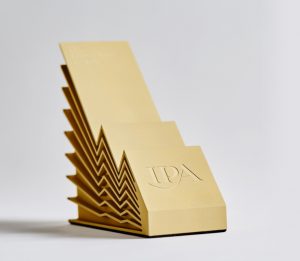One of the plagues of our industry is binary thinking. Its nice and simplistic to pit different ideas or disciplines against each other. It isn’t true or helpful.
A thorough reading of the IPA Effectiveness award winners in 2018 shows that there are many factors that might need to be considered to build brand resilience. I was asked to address this at the IPA Eff Week Conference in October and used my experience as a judge and deputy convenor of reading the entries more than once, and of the discussions in the judging room, to summarise some of the topics a 21st century brand building communications campaign must think about that weren’t really an issue last century.
First of all, (and this was always true), it is not a question of either brand or performance. There are essentially two good forms of advertising. Advertising that creates desire for the brand, and advertising that harvests demand in the short term. Both elements are essential in combination, and need measuring against relevant kpis, and the system effects of each on the other, and the question is the balance of the two.
Here are another ten considerations for brand building in the 21st century, that were probably not considered specifically 21 years ago. They have proven award winning effect in the IPA entries all of which are available at WARC.
In each point, for simplicity, there are just one or two case studies. There are more in the awards data bank that could be mentioned and are well worth reading. You’ll find your favourites.
They’re not in any particular order. None of the considerations are either/or. Its and and and and and and and and and and.
- Diversity
The British Army increased the number of applications it received after launching a compelling story-based campaign to reach a broader more diverse group of young people.
L’Oreal True Match increased its UK range of foundations to 23 shades to promote a more diverse and inclusive approach to beauty.
Both awards only addressed who was in the advertising not behind the scenes. It is undeniably also a worthwhile consideration to think today about the diversity too of the teams working on the account, behind the camera and in the decision making senior teams.
- Purpose
For Barclays purpose-led communications accelerated its cultural transformation and delivered a step-change in marketing effectiveness.
The effect was proved against a consumer roi but also in terms of employee motivation.
- Frictionless customer service and comms.
Ella’s Kitchen created a new communications model designed to support, not sell to mums and dads, which encouraged loyalty.
- Personal and personalised.
Again not a binary choice. Weetabix restored a personal connection with the customer by reviving an old still powerful brand asset (Have you had your Weetabix?) Ikea demonstrated in addition the power of personalisation for every shopping mission.
- Be culturally resonant.
Every great brand has cultural resonance, and it is now something that needs to be a deliberate consideration because culture moves so fast. There’s lots of great examples in the awards but Guinness’ Compton Cowboys is a great story.
- Use of data
There’s more data in the world than there are great insights. 32Red is a good story of intelligent use of data to drive business success. Direct Line Group won the award for best new learning.
- Partnering
Suzuki’s use of Ant and Dec stands out as a different approach to effective advertising. DFS demonstrated the role of partnerships to change brand perception.
- Experience
User experience is more important than it used to be. Customer expectations rise all the time and your standard is set at the best experience you’ve ever had, not the norm for the category.
Skittles took their rainbow free pack experience instore to great effect and the Art Institute of Chicago literally created the experience of sleeping in Van Gogh’s bedroom to promote their exhibition.
- Brand safety
This wasn’t mentioned in any of the case studies but will have been part of the consideration of all schedules in a way that was unknown last century.
- Integrated media and messaging.
The best case studies did this. They created a whole that was greater than the sum of the parts. Audi – the Grand Prix winner – did this to great effect.
That’s the ten. The next round of effectiveness awards for 2020 is now open. As 2020 Convenor I can state that the judges are seeking more diversity of evidence to add to the databank and entries from around the world.
